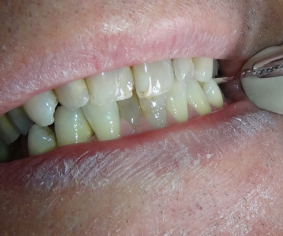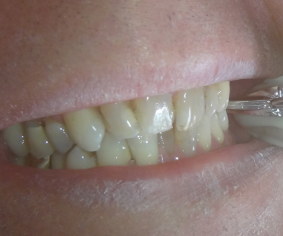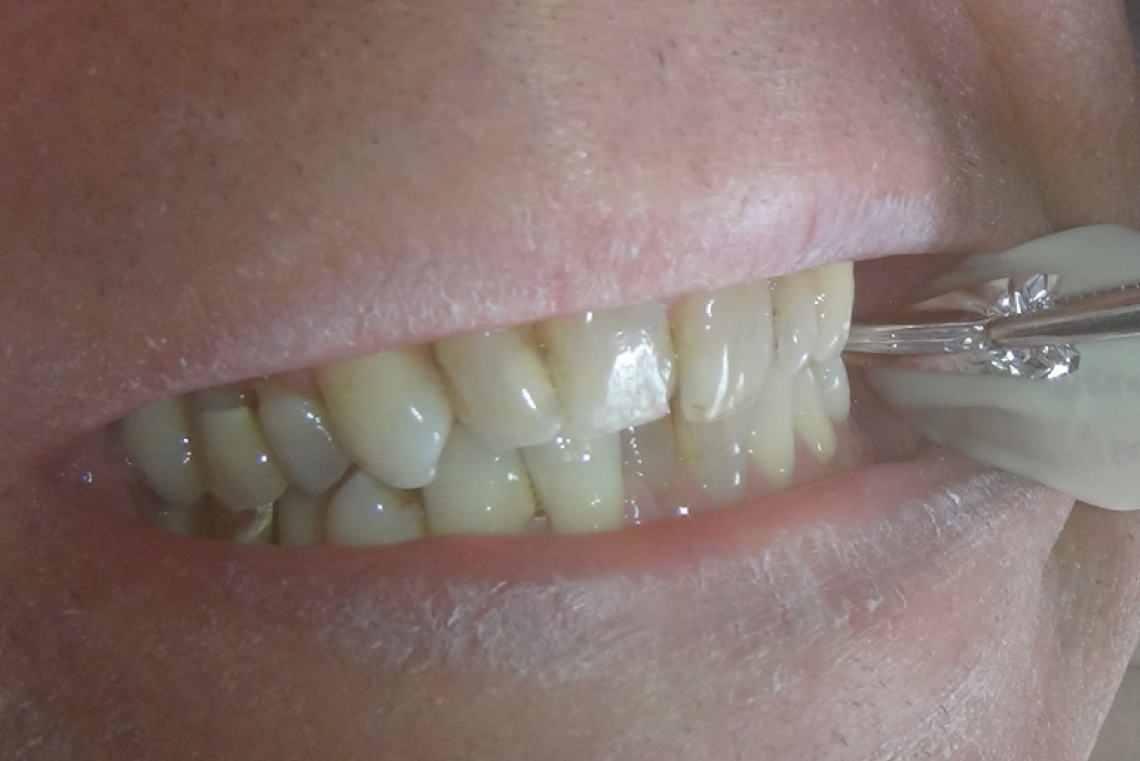When we are doing a restoration in over 95% of cases we do not want to change the patient’s pre-treatment [ie existing] occlusion. This is what we all call the Conformative Approach in Restorative Dentistry.


So I have two tips:
1. If you want to be sure that you haven’t changed the Occlusion when checking the occlusion after you have completed your restoration, examine the patient’s Occlusion before your start.
further reading if you want: Good Occlusal Practice in Simple Restorative Dentistry Brit Dent J 2001 191: 365-381
2. In practice, I find to be the best way of checking that all of the other teeth touch before and after is not to use Articulating Paper, but to use the much thinner Shimstock. This doesn’t leave a mark but you can check whether it is being held by seeing if it pulls through when the patient is biting together.
After fitting a crown on the RHS, and having seen that with articulating paper that the bite seems fine, it is noted that the Shimstock on the opposite side pulls through. So crown is “high’
Whereas after minimal adjustment to the crown, the Shimstock binds. Job done, we can all go home!
From what I have said in Tip 1, you will realise that the best thing is to have done this ‘Shimstock’ check, before you start treatment.
Stephen J Davies
Specialist in Restorative Dentistry
Uploaded by: Arjun Varma – BDS 4




